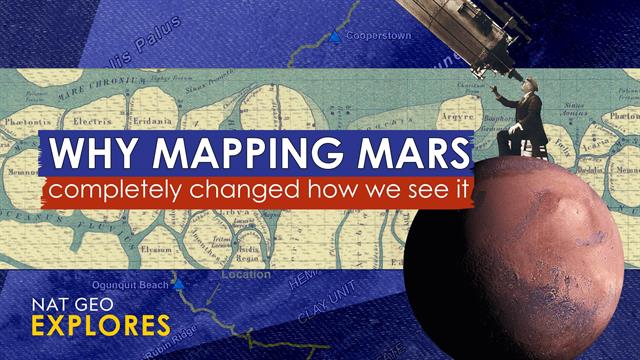Mars Maps: A Feud's Fascinating Legacy
The red planet has always captivated our imaginations, fueling countless science fiction stories and inspiring generations of scientists. But the exploration of Mars isn't just a tale of scientific discovery; it's also a story of human ambition, rivalry, and even a touch of scientific feud. This fascinating legacy is interwoven with the creation and evolution of Mars maps, crucial tools in our ongoing quest to understand our planetary neighbor.
The Early Days: Hand-drawn Maps and Competing Narratives
Early Mars maps, painstakingly created from telescopic observations in the late 19th and early 20th centuries, were far from precise. Limited technology meant features were often misinterpreted, leading to wildly different representations of the Martian surface. This period witnessed a significant divergence in cartographic interpretations, often fueled by the passionate, and sometimes contentious, debates surrounding the existence of Martian canals.
Schiaparelli's "Canali" and the Lowell Observatory Controversy:
Giovanni Schiaparelli's observations in the 1870s, reporting the presence of "canali" (channels), sparked intense speculation about intelligent life on Mars. While Schiaparelli likely misinterpreted natural features, his work ignited the imagination of Percival Lowell, who founded the Lowell Observatory and dedicated his life to charting these supposed canals, further fueling the debate and shaping early Martian cartography. These early, subjective maps, shaped by individual biases and limitations in technology, highlight the human element deeply embedded in scientific exploration. Lowell's maps, while ultimately incorrect about canals, played a critical role in sparking public interest and investment in planetary science.
The Space Age: Robotic Eyes and Refined Cartography
The launch of robotic missions to Mars in the latter half of the 20th century revolutionized our understanding of the planet and fundamentally altered Mars mapmaking. Images from Mariner, Viking, and later missions, provided unprecedented detail, allowing for the creation of increasingly accurate maps.
From Pixelated Images to High-Resolution Models:
Early space-based images were often low-resolution, leading to challenges in interpreting surface features. However, as technology advanced, so did the quality of the imagery, enabling scientists to create highly detailed digital elevation models (DEMs) and topographical maps. This transition also lessened the impact of individual biases on the cartographic record, leading to a more objective and collaborative approach to mapping Mars. Now, agencies like NASA and ESA actively collaborate, sharing data and refining global maps in an open-access model.
The Ongoing Quest: A Collaborative Future
Today, Mars mapping is a collaborative effort, drawing on data from orbiters, landers, and rovers. High-resolution imagery, combined with sophisticated data analysis techniques, allows for the creation of incredibly detailed maps that aid in the planning of future missions and the understanding of the planet's geological history.
The Role of Open Data and Citizen Science:
The democratization of planetary science data has also played a significant role. Open-access datasets allow researchers worldwide to contribute to Mars mapping efforts, fostering collaboration and accelerating scientific discovery. Citizen science projects even allow the public to participate in analyzing Martian images, aiding in the identification and classification of surface features.
Conclusion: From Feud to Collaboration
The history of Mars maps mirrors the broader history of scientific exploration: a journey marked by both individual ambition and collaborative progress. While early maps were often shaped by competing interpretations and limited technology, the current era is characterized by a global, collaborative approach to understanding Mars. This shift from a landscape marked by scientific feuds to one of open collaboration underscores the power of shared knowledge in unlocking the mysteries of our solar system. The ongoing refinement of Martian cartography isn't just about creating more accurate maps; it's about building a more comprehensive and shared understanding of our planetary neighbor. This open, collaborative approach promises an even brighter future for Mars exploration.
Keywords: Mars maps, Mars cartography, Mars exploration, Percival Lowell, Giovanni Schiaparelli, Martian canals, NASA, ESA, digital elevation model, DEM, planetary science, citizen science, space exploration, red planet, robotic missions.
